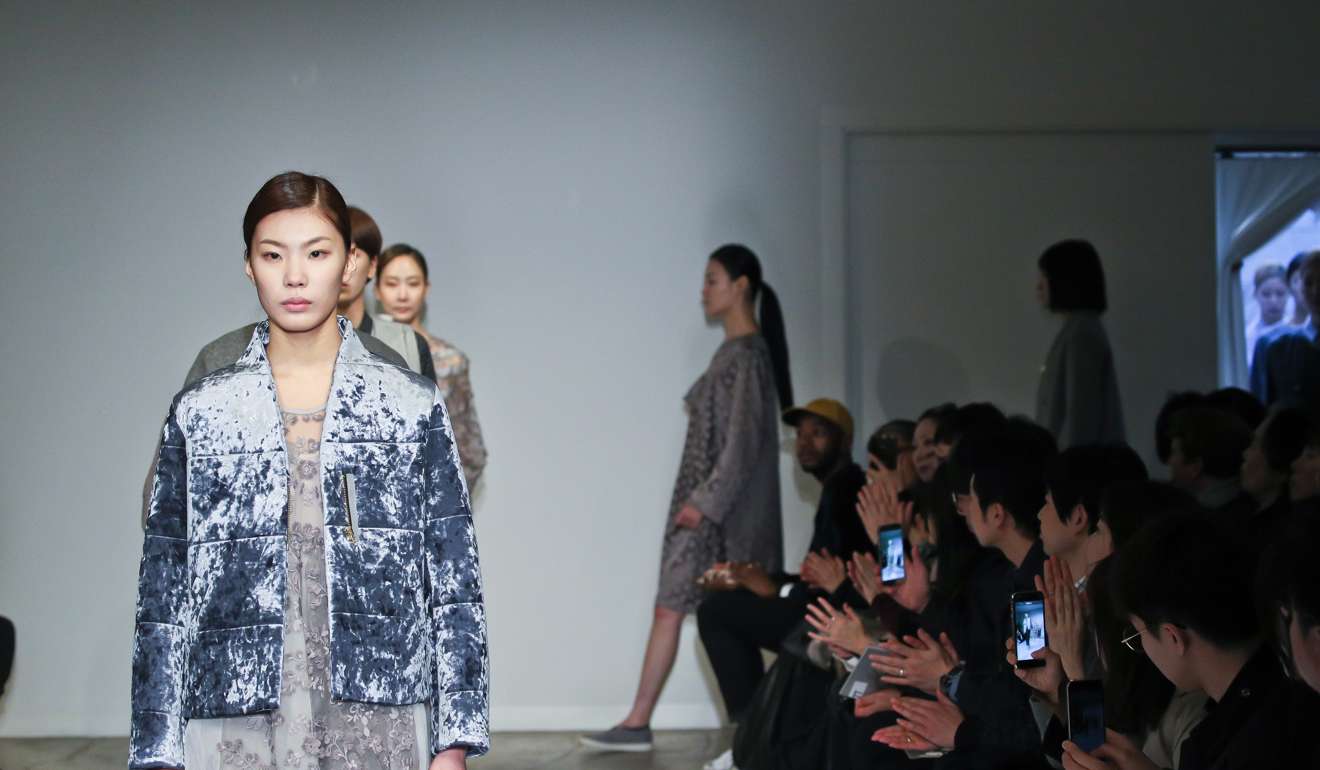
Hanbok hangover: how traditional Korean dress influences today’s street-style and casual-wear designers
Designers at Seoul Fashion Week incorporated fabrics, shapes, patterns and detailing from traditional dress in their street-style and casual-wear collections for autumn-winter 2017
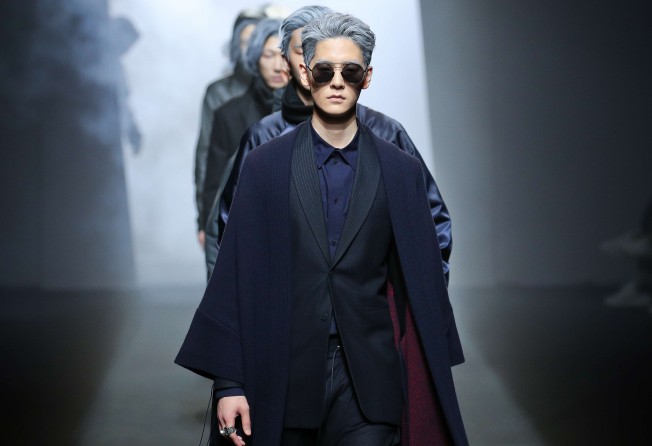
In South Korea, one of the most enduring influences on fashion design is the traditional hanbok. Long before Chanel presented a Korean-dynasty-inspired cruise collection in Seoul in 2015, Korean designers had played with different ideas for modernising the traditional national dress.
Veteran designers such as Lie Sang Bong have made use of traditional Korean fabric arts, including silk quilting techniques found on bojagi, Korean “wrapping cloths”, while the otherworldly creations of late designer Andre Kim often featured traditional patterns and an endless array of shimmering brocade. Seeing his collections on the catwalk made you feel like you were watching a futuristic Korean opera while floating in space.
The popularity of historical Korean dramas such Jewel in The Palace and Moon Embracing The Sun has contributed to a resurgence in the popularity of traditional wear among Koreans, while in everyday life the hanbok is often worn on important cultural days or at family events, such as weddings and first birthdays.

On the streets of Anguk and Insadong, popular hanok (traditional Korean house) neighbourhoods of Seoul, young Koreans and tourists alike can often be seen in borrowed hanboks, rented by the hour from local shops. Most of them wear bright, vibrant colours in deep reds, purple, gold, or bright pink – colours traditionally worn by Korean royalty. Muted greys and pastels were worn by commoners and peasants, depending on marital status and age; black and white hanboks are rarely worn because of the colours’ association with death.
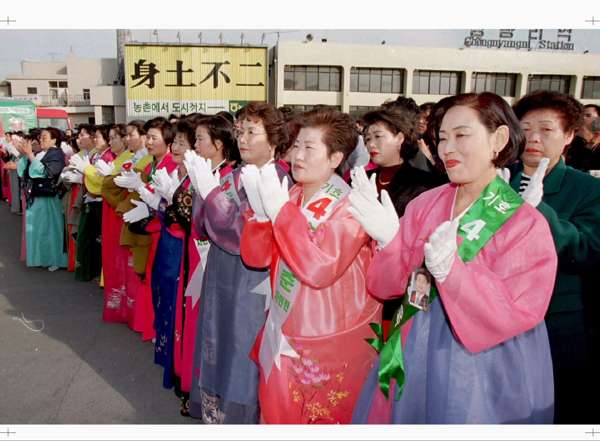
On the subways and streets of Seoul older women can often be seen wearing tent-shaped silk dresses – inspired by the garb of the Joseon dynasty that ruled the Korean peninsula for five centuries – that keep the wearer cool in the heat of summer or sporting boxy cotton-filled coats made from Korean jacquard with woven patterns featuring flowers such as the chrysanthemum and cherry blossoms.
And last week, while models paraded autumn-winter 2017 collections at the Dongdaemun Design Plaza, on the streets of Seoul a group of Indonesian tourists had finished off their hanbok looks with hijabs, while young Korean women could be seen in full or partial hanboks; modernised versions of the jeogori – the upper part of the hanbok – can be bought at shops and markets, to be worn with dresses, jeans and other looks. At fashion week, there were some new takes on traditional clothing, and the hanbok’s influence could be seen in casual-wear and even street-style collections.

At The Kam’s “Wear Grey” concept show, held in collaboration with four other sustainable-fashion designers, lilac lace embroidered with traditional floral patterns was layered over other fabrics, while chest-level ruffle details on a satin dress emulated the top of the chima, or skirt, of a hanbok.
“The collection features different aspects of the hanbok’s tie or collar,” said Seonju Kam, director of The Kam, of the long neck sash featured in a few looks. “I think the grey tones of this collection are reminiscent of the late Joseon dynasty.”
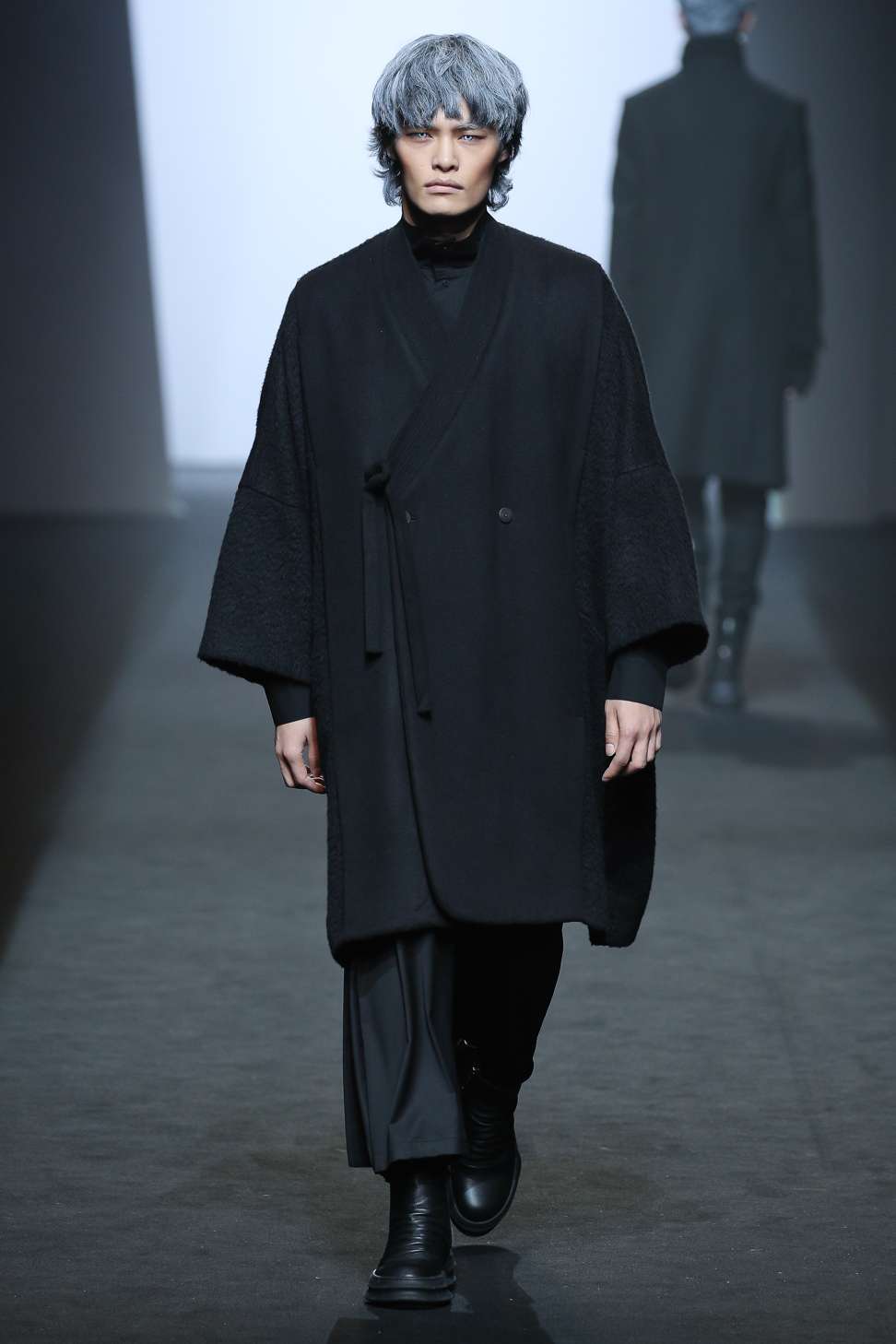
Dgnak, a brand led by Kang Dong-jun, one of Korea’s more eccentric designers, has in the past married traditional Korean silhouettes with all-black street-style looks. Kang often has local underground hip hop groups perform and walk in his shows. This season, he conjured visions from 1993 Hong Kong martial arts film The Bride With White Hair; models with whitened hair and wearing silvery contact lenses paraded down the catwalk in black hanbok-inspired robes and coats amid the fog from a smoke machine.
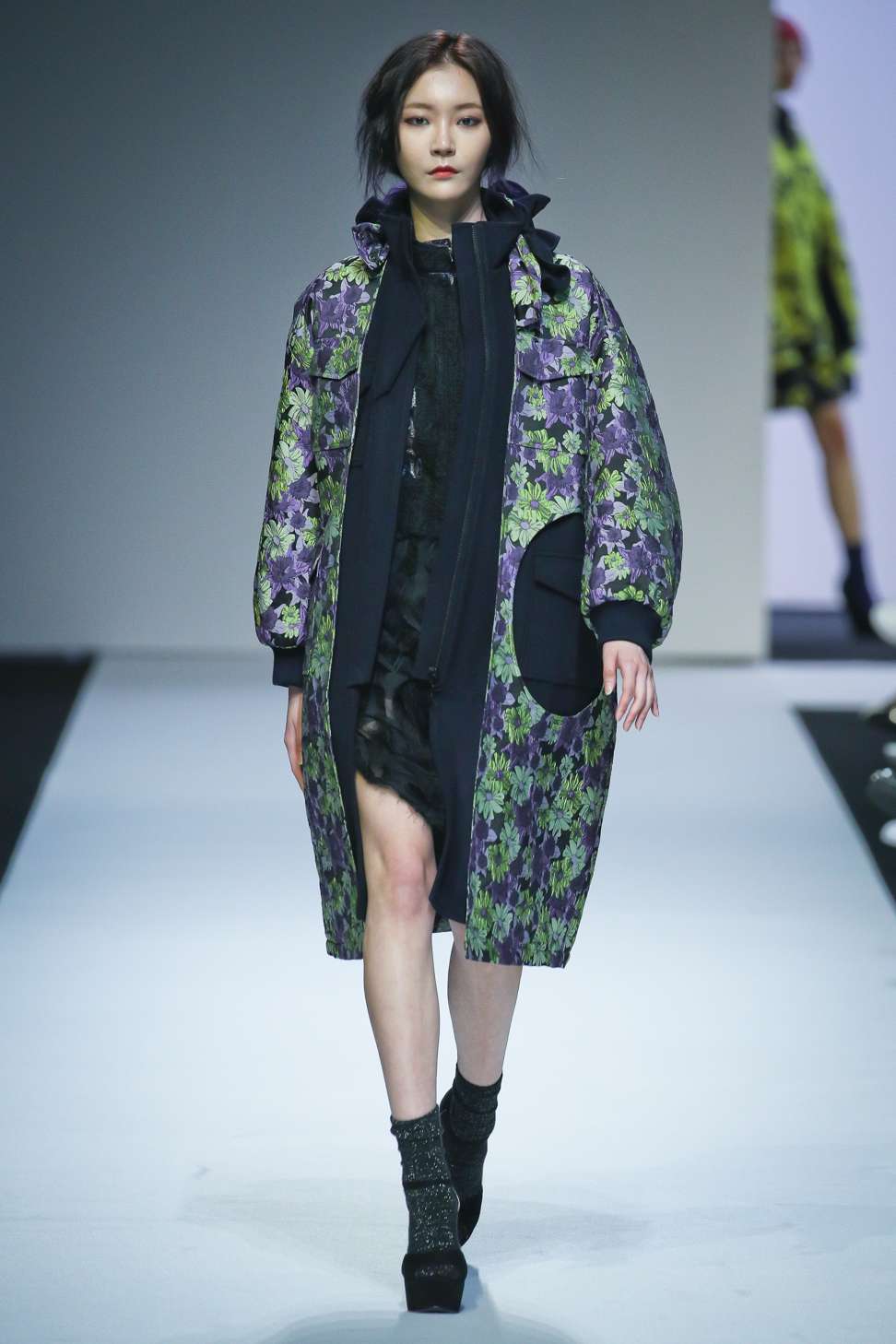
Near the end of his show, Yohan Kim, of Yohanix, featured a series of shiny brocade coats in pink and navy, lime-green and navy, and violet and green, featuring cherry blossom and other floral patterns. Such materials and patterns are usually worn by older generations of Koreans; it was interesting to see the look reinvented for a youthful audience.

Miss Gee Collection, designed by Gee Chun-hee, caters mostly to older women and offered a take on an old classic too. The tailored, feminine womenswear collection featured a black satin two-piece suit with floral patterns, as well as a topcoat featuring the same patterns along with a fur-rimmed collar.
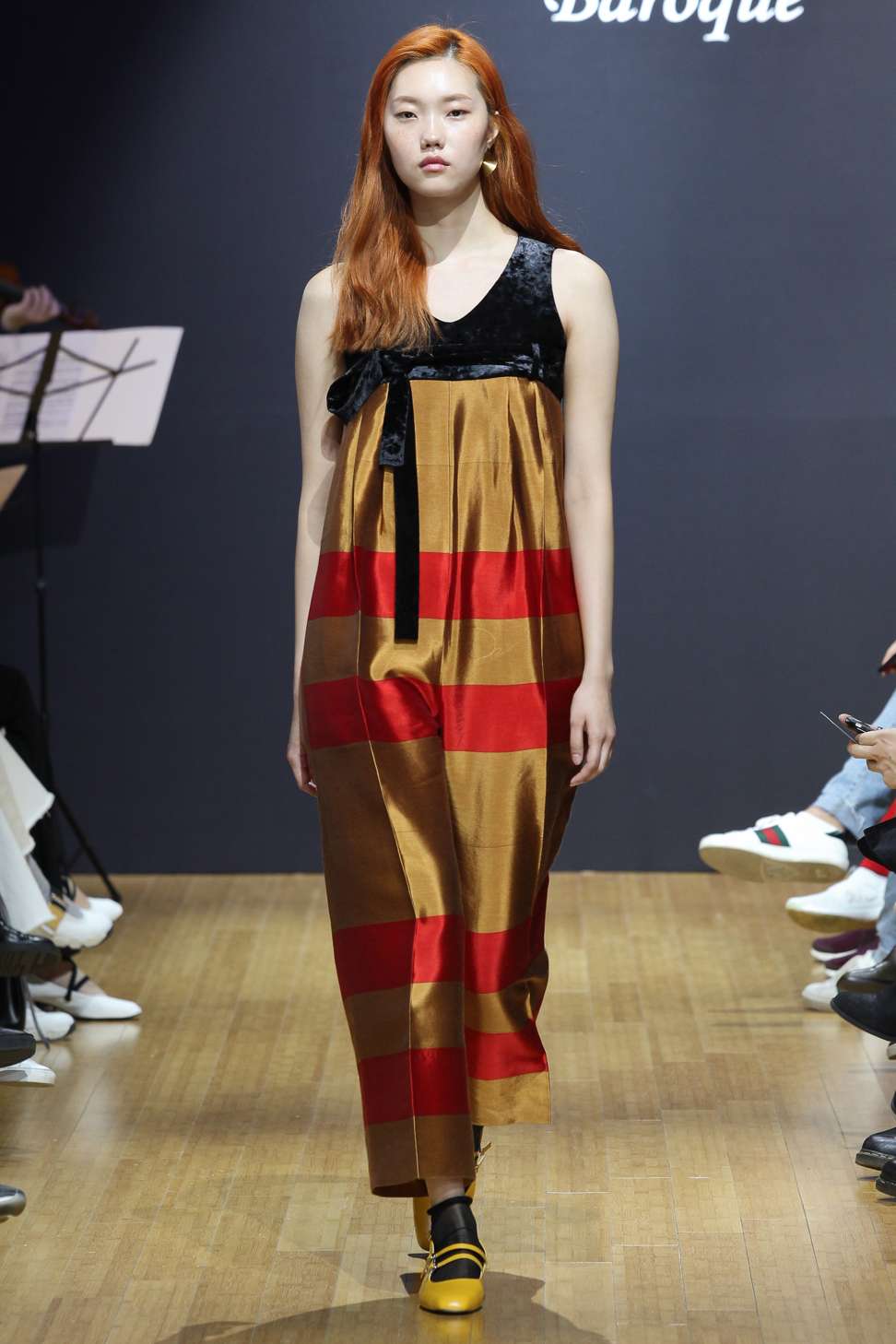
Injoo Lee at Moon Lee Artwear had a fun, youthful twist on traditional silhouettes and colours. Lee, who is known for combining traditional materials with modern pattern cutting techniques, showed a playful series of looks, including velvet goreum sashes and an array of billowing gem-toned chima-like bottoms.